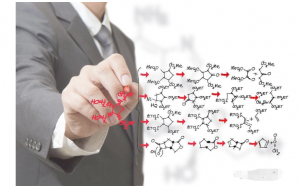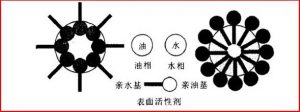Rubber-to-metal bonding
Methods are: hard adhesive method, adhesive method, brass plating method and direct adhesion method.

First, the hard adhesive method
This method is to paste or paint a hard rubber layer on the metal surface first, then paste the soft rubber to be bonded, and finally hot press vulcanization to form the whole. Hard glue in the raw glue content should not be too high, the amount of sulfur yellow is generally 30 to 40 parts, can add iron oxide to improve adhesion, the amount of about 20 parts, the bonding temperature can be doubled, more than 20 parts, performance decline. In order to prevent the free sulfur yellow in hard glue to soft glue layer diffusion, can be added between hard glue and soft glue with no sulfur or low sulfur semi-hard transition layer.
Before bonding hard glue with metal, first use hard glue material to prepare glue paste (solvent with gasoline, ratio 1:1.5), apply glue paste on the surface of metal to be stuck, after evaporating with solvent, stick hard film to metal surface, before bonding hard glue with soft glue, apply glue paste on the surface of hard glue, then stick soft glue.
Because the coefficient of thermal expansion of hard adhesive is bigger than steel and iron, so when the temperature changes, hard adhesive is easy to delaminate with metal core.
Cautions:
① The rate of glue content of hard glue should not be too high.
② The amount of sulfur yellow is large (30~40 parts).
③ Appropriate increase the content of iron oxide (about 20 parts).
④ The vulcanization speed of sticky rubber should not be too fast, and the vulcanization speed of hard and soft rubber should be equal.
⑤ Add sulfur-free or low sulfur intermediate layer between hard and soft rubber.
⑥ Metal surface should be sandblasted and cleaned with gasoline.
⑦ Apply hard glue paste on metal surface, or apply to metal surface in the form of glue paste.
⑧ Use low temperature or gradually increase temperature for a long time to vulcanize.
Features:
① High bonding strength and good corrosion resistance.
② Simple process, suitable for the bonding of large metal components such as various rubber rollers, large chemical vessel lining.
③ poor heat resistance, the working temperature exceeds 70 ℃, the bonding strength drops sharply.
④ Poor dynamic fatigue resistance.
Recipe example:
①Hard rubber rollers:
NR 100, Fe2O3 20, zinc barium white 20, CaCO3 32, MgCO3 11, clay 60, Gummaron 2, asphalt 12, slaked lime 5.6, sulphur yellow 33.6.
②Solid core tire hard rubber:
NR 100, recycled rubber 33.3, ZnO 5, Fe2O344.4, clay 46.4, slaked lime 15, stearic acid 1.4, accelerator M 1.7, accelerator D 1.3, sulfur yellow 37.5.
Second, adhesive method
After the surface treatment of metal surface, a layer of adhesive is painted on the fresh surface, and then rubber is attached for vulcanization. The method is simple and practical, does not require the use of processing equipment, wide applicability, is currently the most widely used between rubber and metal method. The bonding effect of rubber and metal depends largely on the result of metal surface treatment and the nature and performance of the adhesive. For different metal materials, it is important to choose the right adhesive. The disadvantages of the adhesive method is the solvent is toxic, polluting the environment, damage to human health, poor storage stability

1, isocyanate adhesives
Mainly used for NR, CR, NBR and other rubber and steel, stainless steel, aluminum and zinc and other metal materials between the bonding. High bonding strength, simple operation process, oil resistance, solvent resistance, aging resistance, acid resistance, corrosion resistance, but heat resistance is not as good as the brass plating method.
Commonly used polyisocyanate adhesives:
① Sodium lek (JQ-1 adhesive): triphenylmethane triisocyanate, easily soluble in dichloromethane, dichloroethane or chlorobenzene as an adhesive. Generally 20% dichloroethane solution of triphenylmethane triisocyanate, less toxic than diisocyanate, oil resistant, fatigue resistant.
Note when using:
a. The coating should be thin, <10µm, maximum not more than 30µm.
b. Dilute the adhesive with pure dichloroethane at a ratio of 1:1 or 1:3 before use.
c.Operating environment humidity <60%~70%.
d. Generally paint 1~2 times, after painting, it needs to be dried, then apply a layer of protective adhesive or paste a thin layer (0.5mm) of film with hardness of about 60 degrees for transition layer, it is not suitable for direct steam vulcanization.
e. Sodium lek is easy to agglomerate, it is appropriate to use the injection pressure process and fast vulcanization method; if the molded production, the pressure must be 0.7~1MPa.
f. Should try to shorten the parking time after applying adhesive to before vulcanization.
g. When bonding NR or SBR and metal with lek sodium, use CR-phenolic resin as an intermediate layer, which can improve the bonding strength.
h. Isocyanate liquid mixed with a small amount of chlorinated NR rubber, can improve the bonding strength.
Example: Bonding of large rubber fenders
Steel plate is first sandblasted, degreased, painted with lek sodium adhesive, dried and painted with protective glue solution, a layer of high hardness (Shore A 82~85 degrees) rubber is added, and then NR is attached.
② 2,4-toluene diisocyanate (vulcabond TX), dissolved in ether or acetone solvent for use.
③ p-diphenylmethane diisocyanate (Hylene M-50) polar, chemically active, easily soluble in rubber, can directly form a chemical bond between rubber and metal, can also be vulcanized at low temperatures, high adhesive strength.
2、Chlorinated natural rubber adhesives
Mostly used for rubber and steel, aluminum, iron, zinc and magnesium and other metal bonding, high adhesion to CR, NBR and other polar rubber, NR, SBR bonding strength is low.
Composition: chlorinated natural rubber + solvent (toluene, chloroethane), if necessary, a small amount of aliphatic hydrocarbons, ketones, ethers or ethanol can be added as mixed solvent, adding resins, plasticizers and modifiers, such as phenolic resins, alkyd resins, chlorinated polyolefins, aromatic nitroso compounds, DBP, etc., can improve the bonding performance of NR, SBR and metal.
The disadvantage of this method is that the initial adhesion is not good, and it is not easy to bonding molding. Improvement method: Application of CR – lek sodium mixed adhesive for the transition layer. Among the CR adhesive formula:
General-purpose CR 100, MgO 4, ZnO 5, antioxidant 2, dichloroethane 444
20% CR adhesive: 20% JQ-1 adhesive = 10:1
When applying mixed transition solution, the steel parts need to be polished, cleaned with solvent, coated with chlorinated rubber JQ-1 adhesive, dried for more than 40min, then coated with mixed transition solution, dried for 20~30min, then glued and vulcanized.

